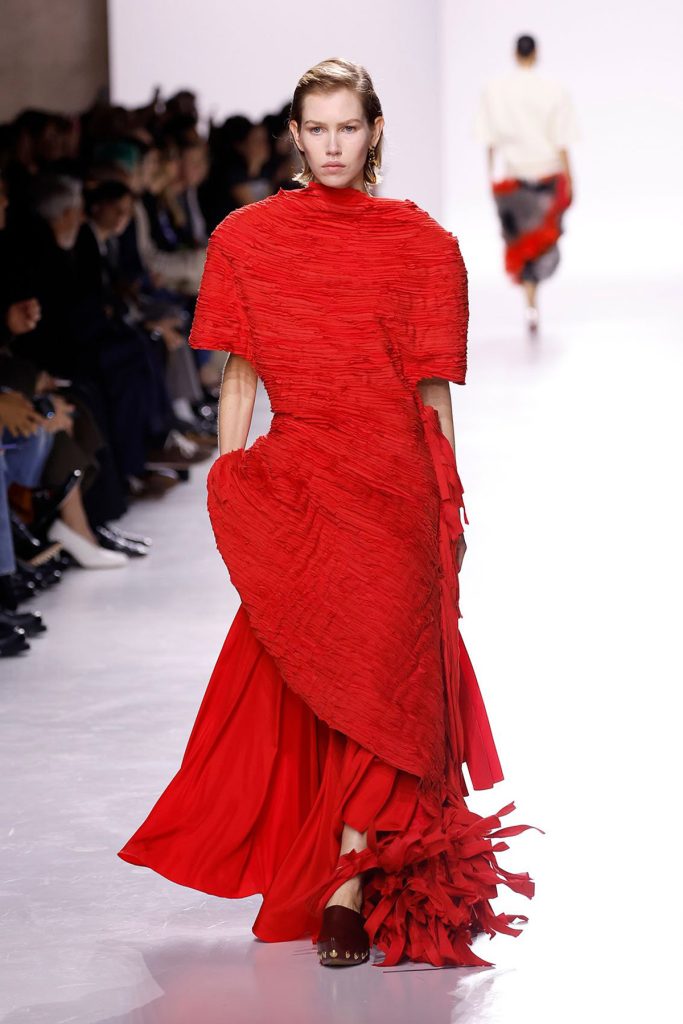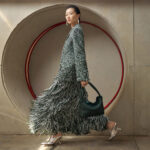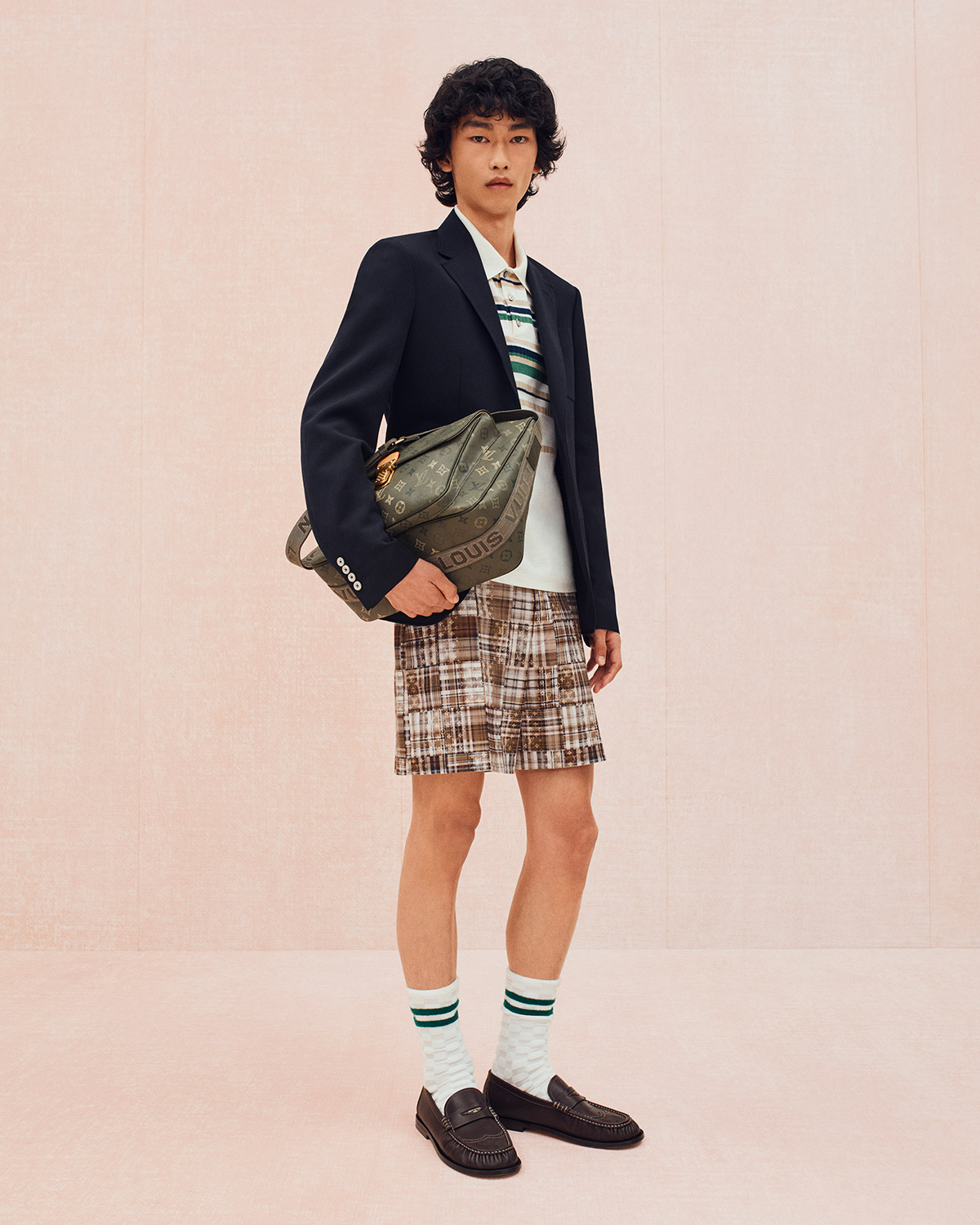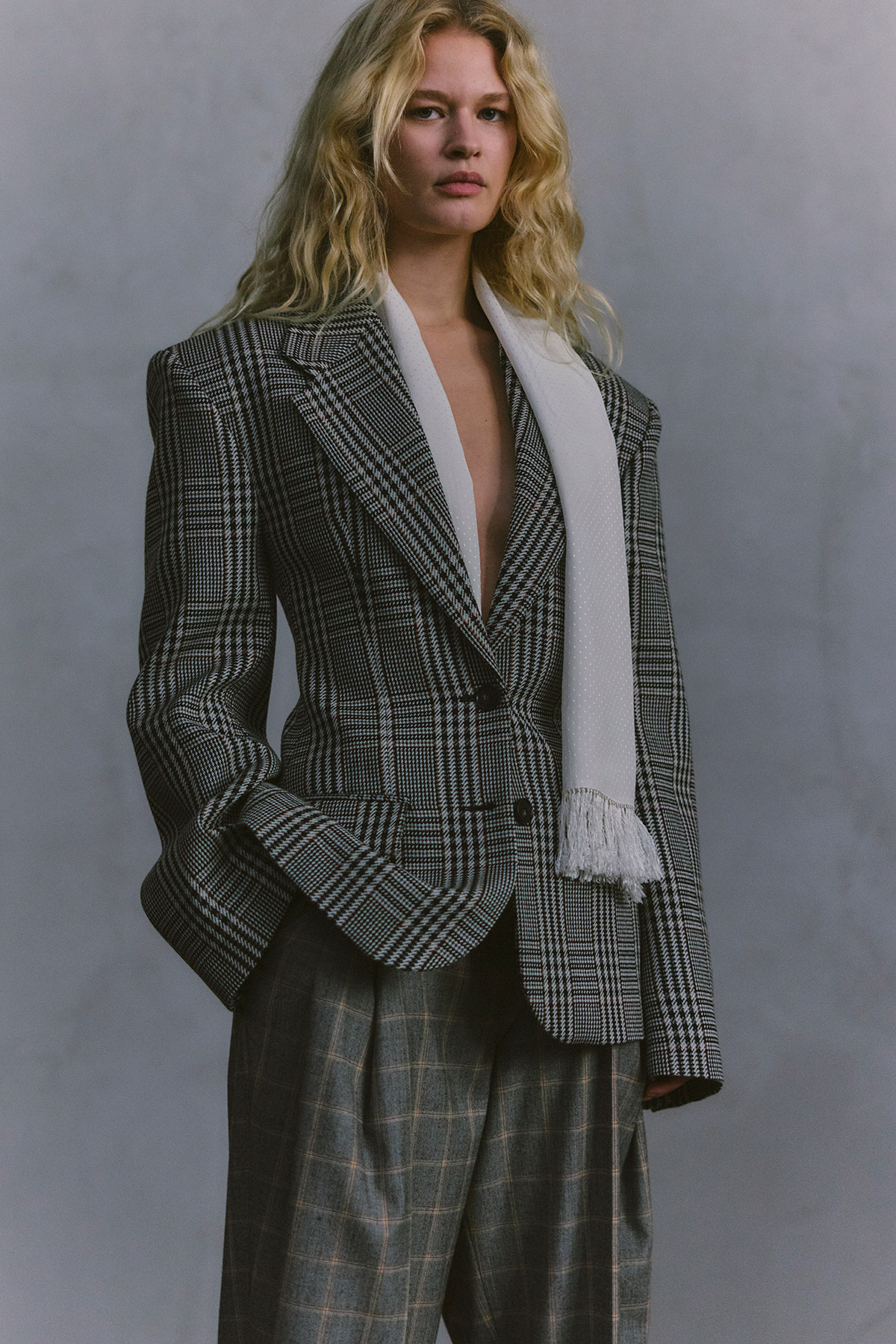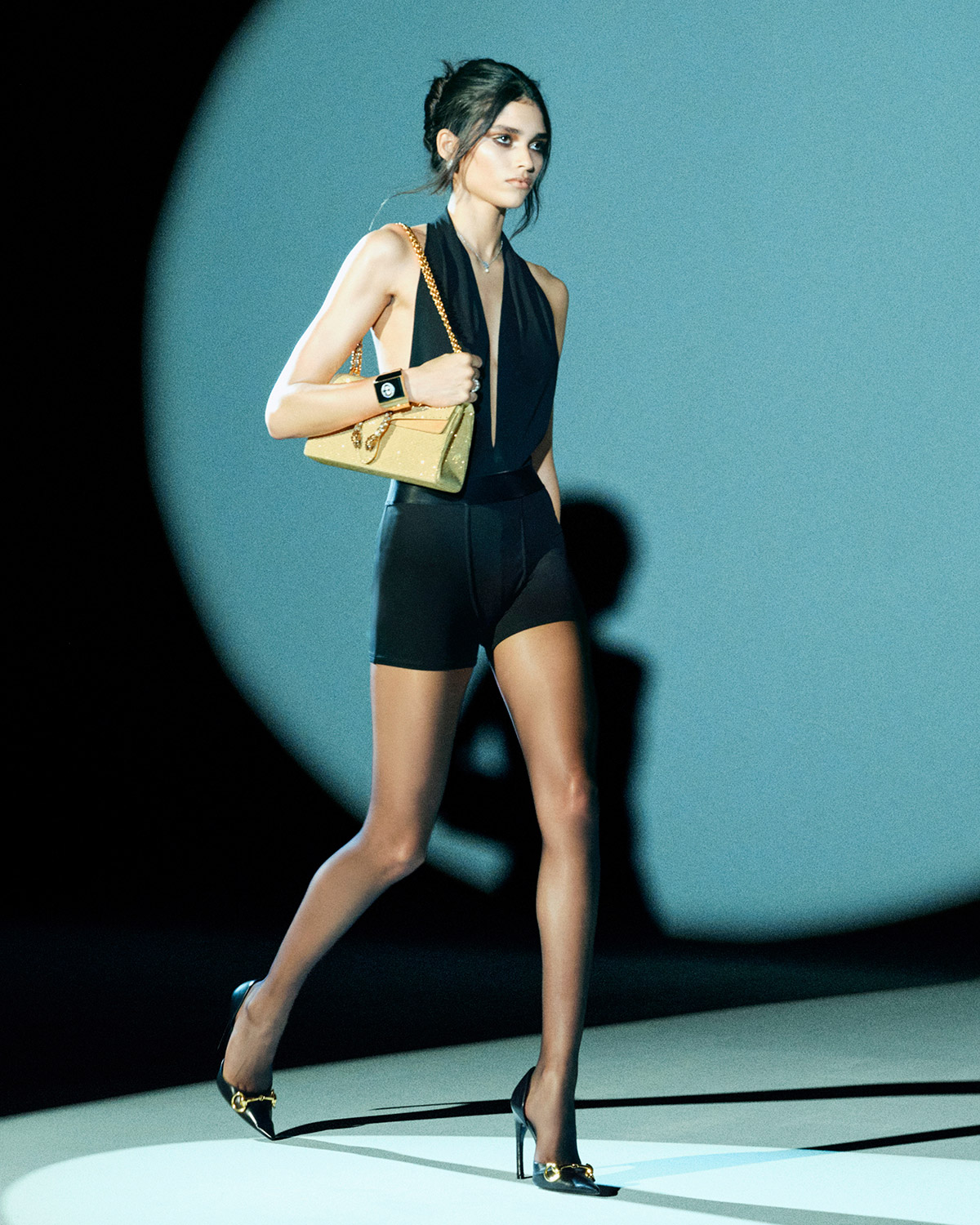From recycled fiberglass “furs” that seemed lit from within to silhouettes alive with movement, Trotter’s debut marks a new chapter for the Italian house.
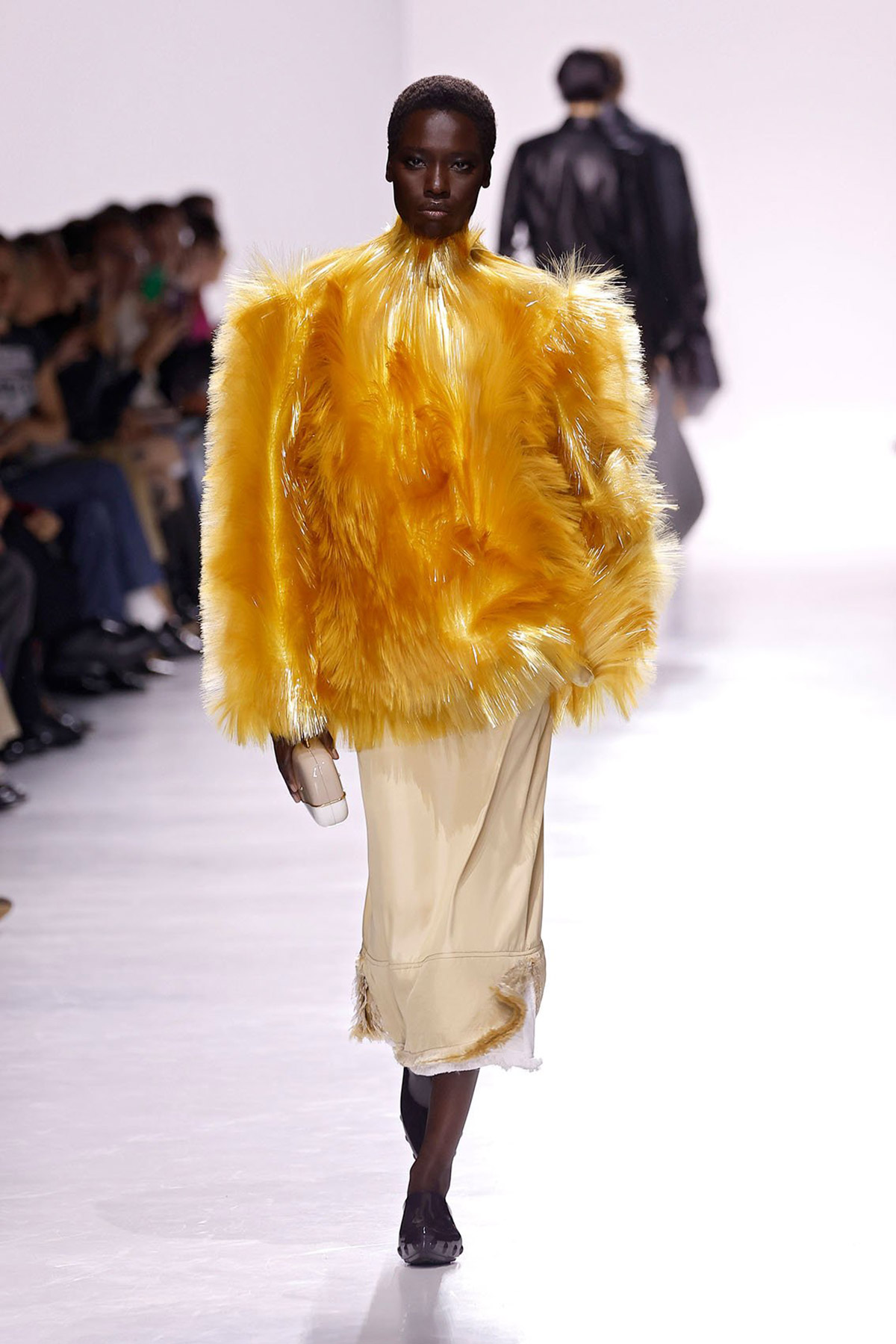
Summary
- Louise Trotter’s debut for Bottega Veneta felt uniquely intimate, unfolding like a personal sketchbook charting her immersion into the Venetian house.
- The collection highlighted textile innovation, notably transforming recycled fiberglass into ethereal, illuminated “furs” and outerwear.
- Reflecting Trotter’s thoughtful and attentive approach, the designs prioritized kinetic energy and sensory color palettes while honoring the brand’s heritage and the Veneto region.
A designer’s debut collection is always a moment of revelation, often preceded by enough hype to power a small city, but Louise Trotter’s first presentation for Bottega Veneta felt uniquely intimate. It wasn’t a loud declaration of a new era, but rather the measured, confident unveiling of a personal sketchbook. Look by look, the collection unfolded like entries written during a period of deep immersion, charting the designer’s personal journey into the heart of the Venetian house.
This sense of introspection and meticulous attention to detail is characteristic of Trotter. Her career trajectory, marked by a transformative time at Joseph, followed by successful tenures revitalizing Lacoste and Carven, has always highlighted a blend of poetry and pragmatism. I’ve had the pleasure of speaking with Louise a few times during those years. What always struck me was her grounded presence; she is attentive, kind, and possesses a rare humility in an industry often driven by theatricality. She listens more than she speaks.
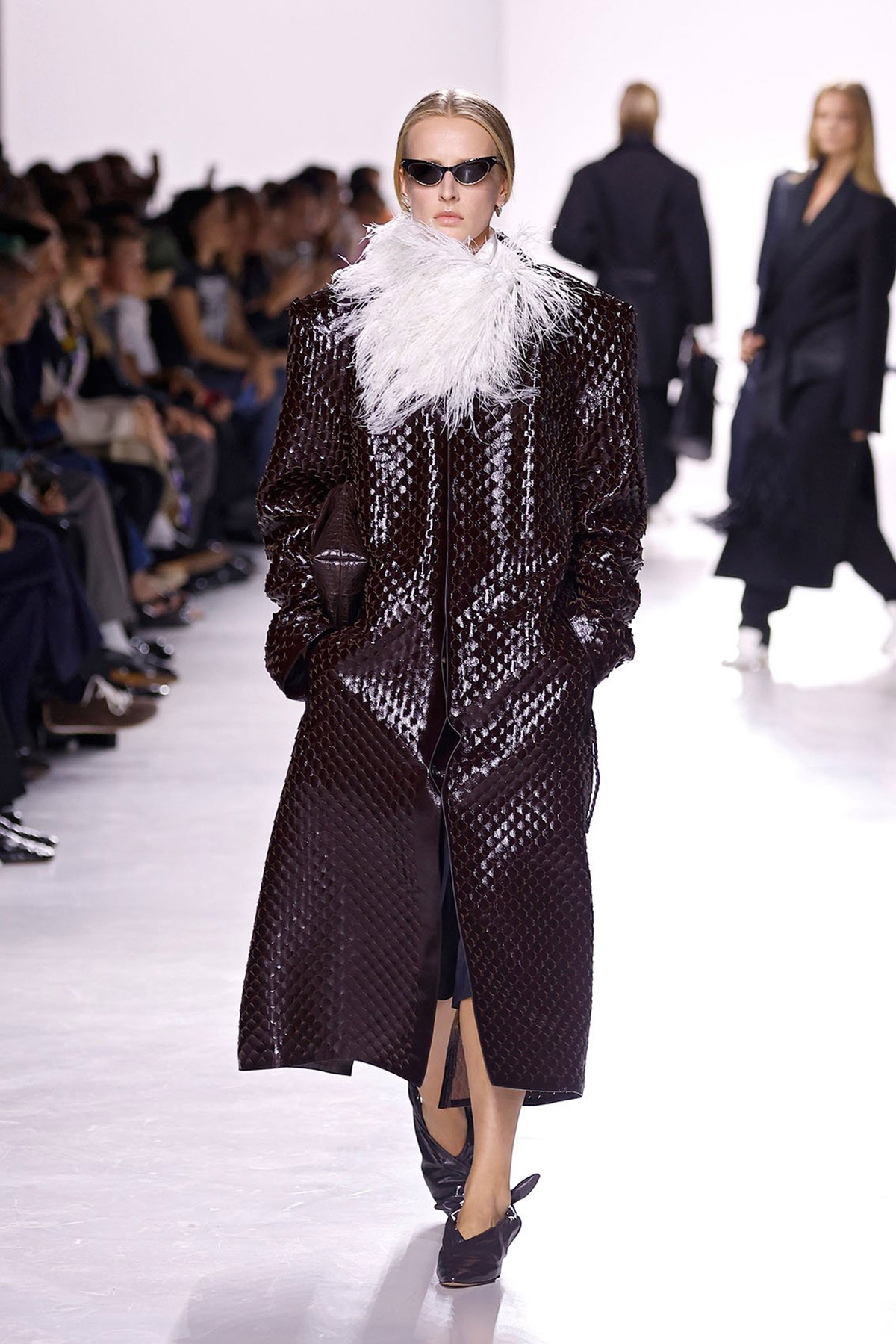
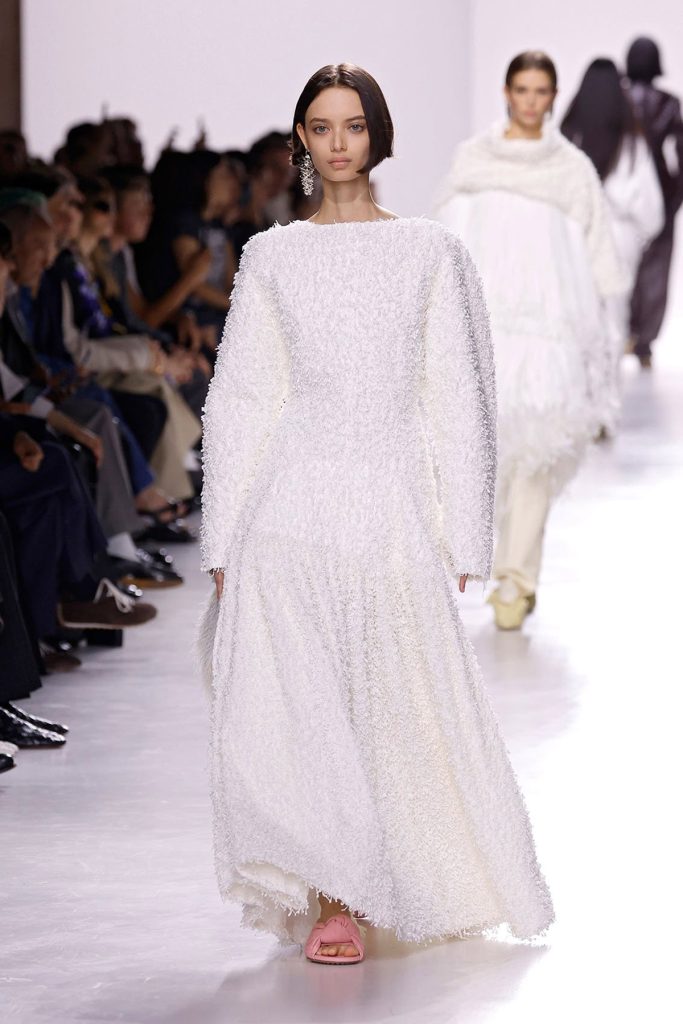
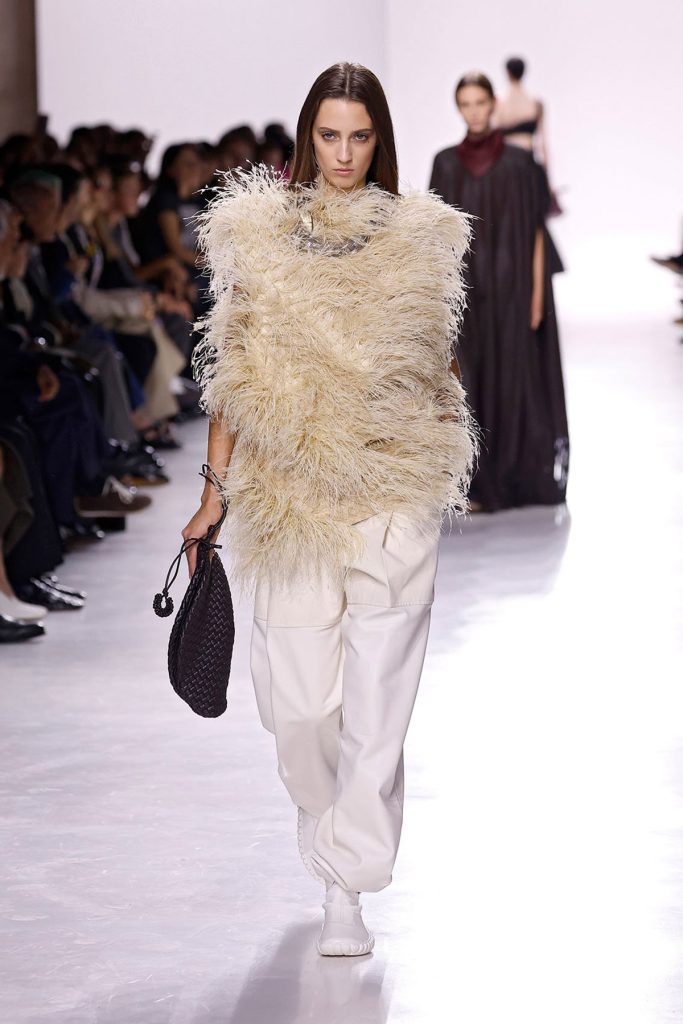
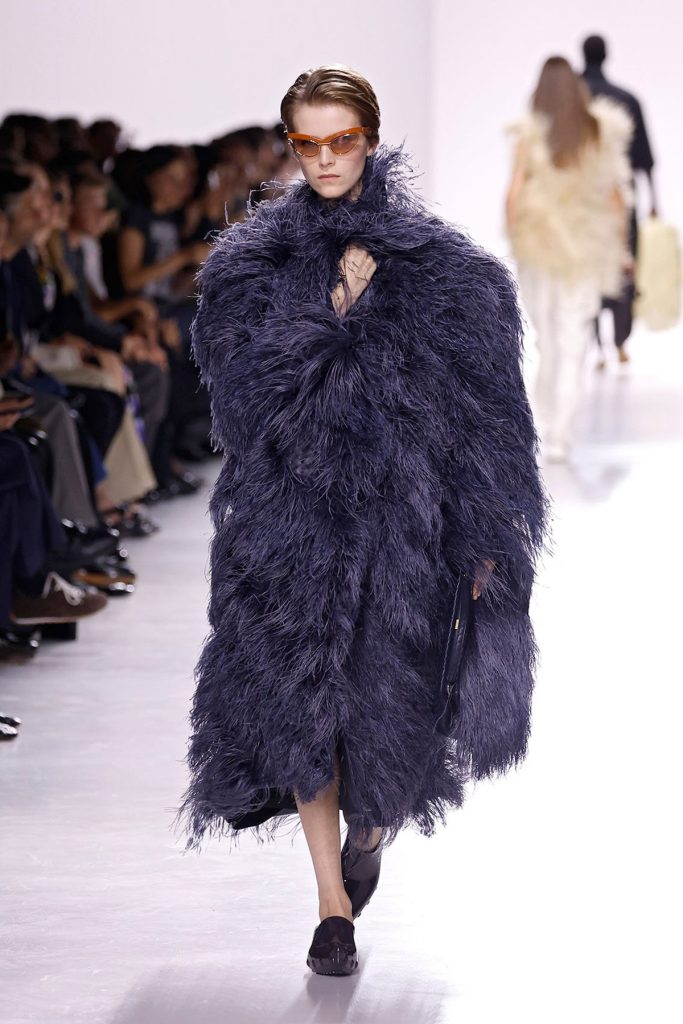
That inherent thoughtfulness, that capacity for focused observation, is the very soul of this debut. It’s clear that her process was one of listening—to the archives, to the artisans, and to her new environment. Since taking the helm, Trotter has spent significant time absorbing the atmosphere of the Veneto region. The unique light of Venice and the legacy of Murano glassmaking permeated the atmosphere. This influence was immediately apparent in the show space: a white runway punctuated by ice cube-shaped glass seats, the setting as stark and reflective as a colorful frozen lagoon.
Trotter described exploring the Bottega archives as akin to being let loose in a “candy box,” and the resulting collection bursts with the joy of discovery, particularly in its material innovation. In a feat of modern alchemy, she and her team manipulated recycled fiberglass, an industrial, often hidden material, into something ethereal. Plush, chubby coats and fuzzy skirts seemed to possess their own internal light source, like capturing nebulae in textile form.
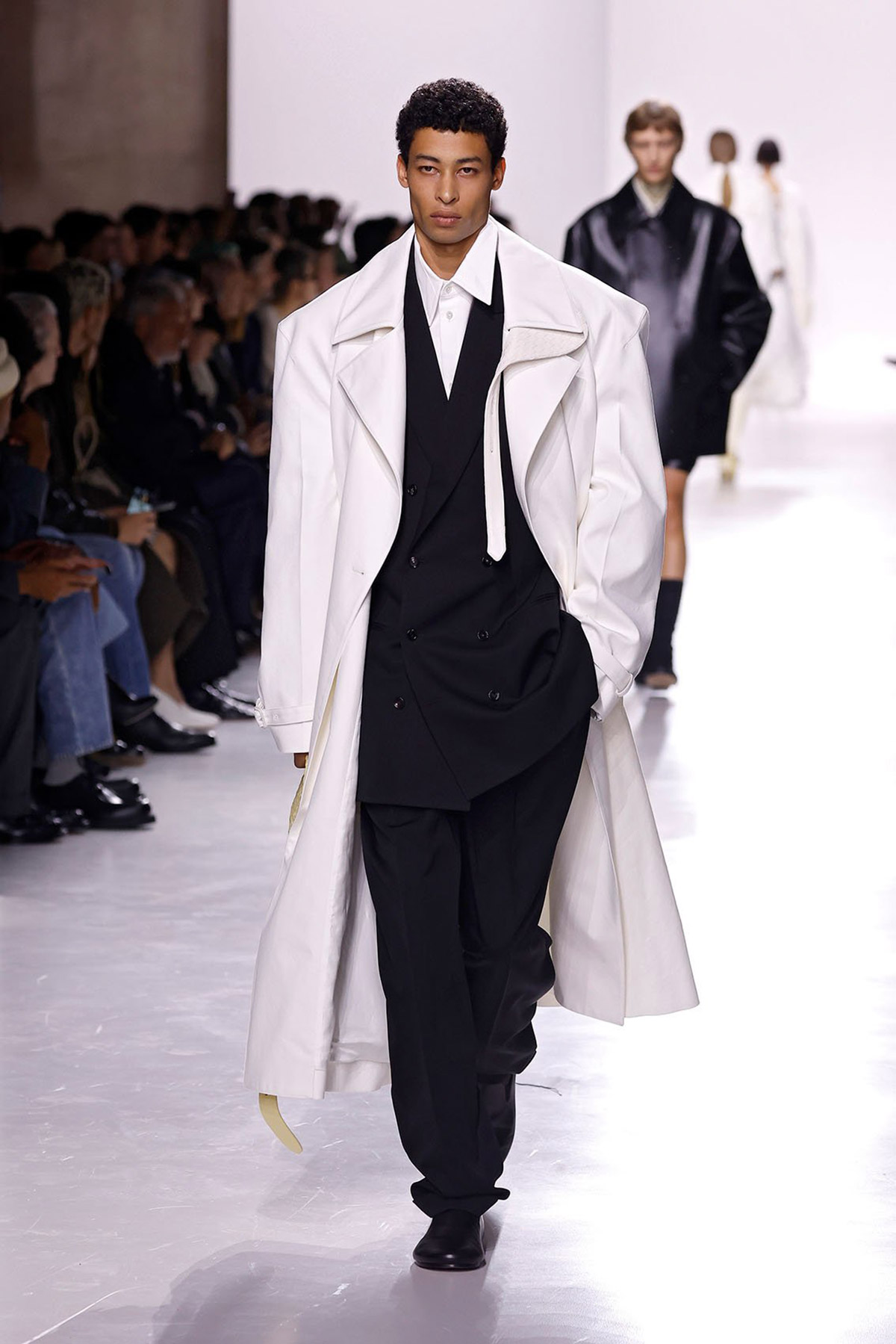
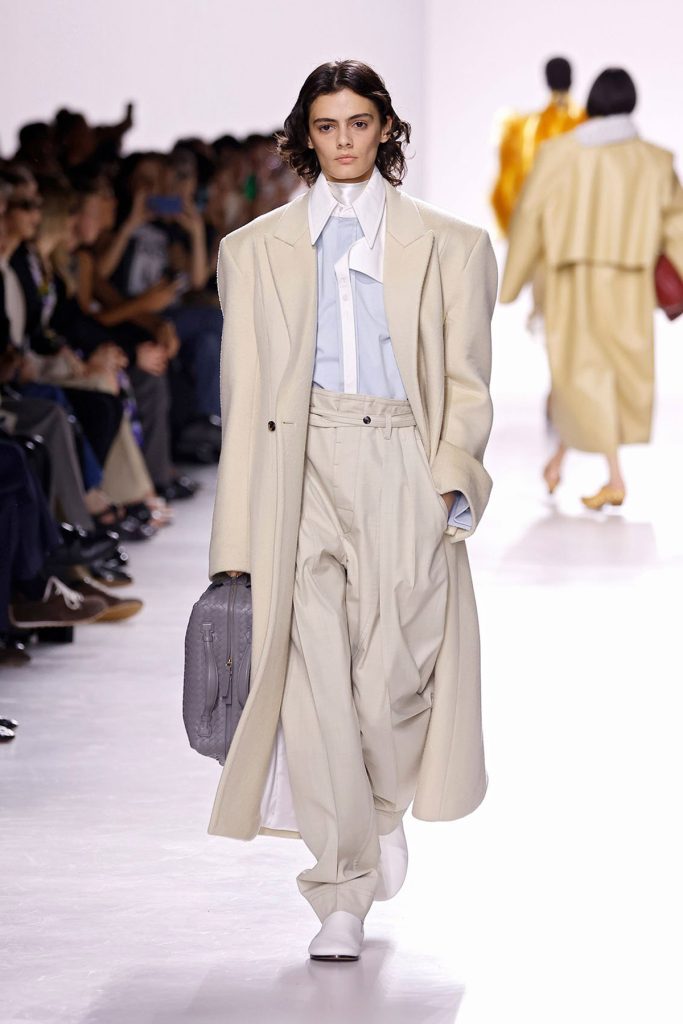
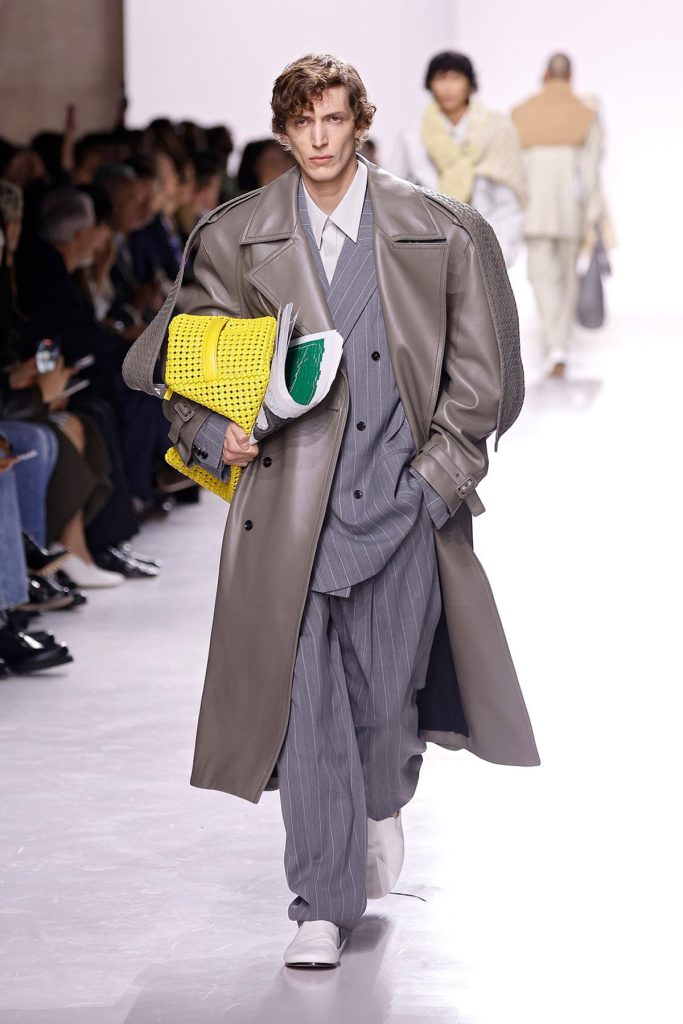
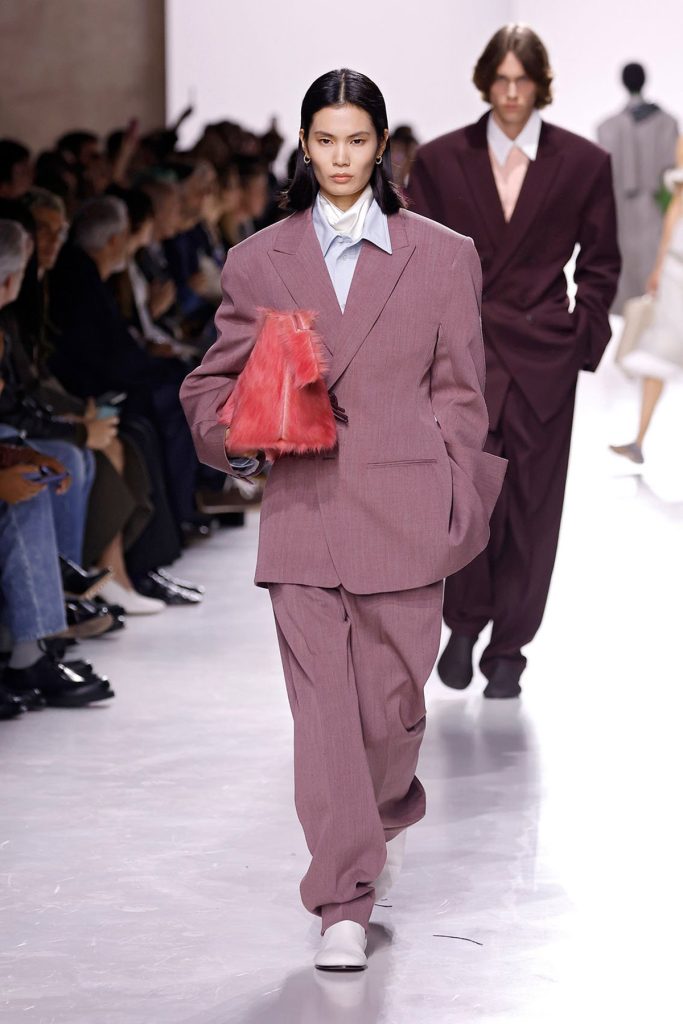
The collection was alive with kinetic energy. Movement was a defining feature, imbuing the clothes with a sense of dynamic reality. Skirts constructed from tiers of leather bands trailed with fluidity, while delicate fringes traced the seams of micro-pleated dresses. Silhouettes were generous, often oversized, offering a protective embrace that nodded to the assertive proportions of ’80s power dressing, yet felt entirely contemporary.
The color story was bold and deeply sensory. The palette was a confident medley of dusty rose, scarlet red, marigold yellow, kelly green, coral pink, deep purple, metallic burgundy, plum, and grounding grey. The colors popped with the saturated intensity of a mid-century Technicolor film. The juxtapositions were masterful: structured, leathery button-up shirts were paired with opulent, full skirts bursting with feathers, blending chartreuse with kelly green, or a sophisticated mix of burgundy, silver, and black. Even the “sweaters,” rendered in marigold yellow, scarlet red, and silver-blue, shimmered with unexpected depth, their innovative fiberglass construction catching the light and constantly refracting it.
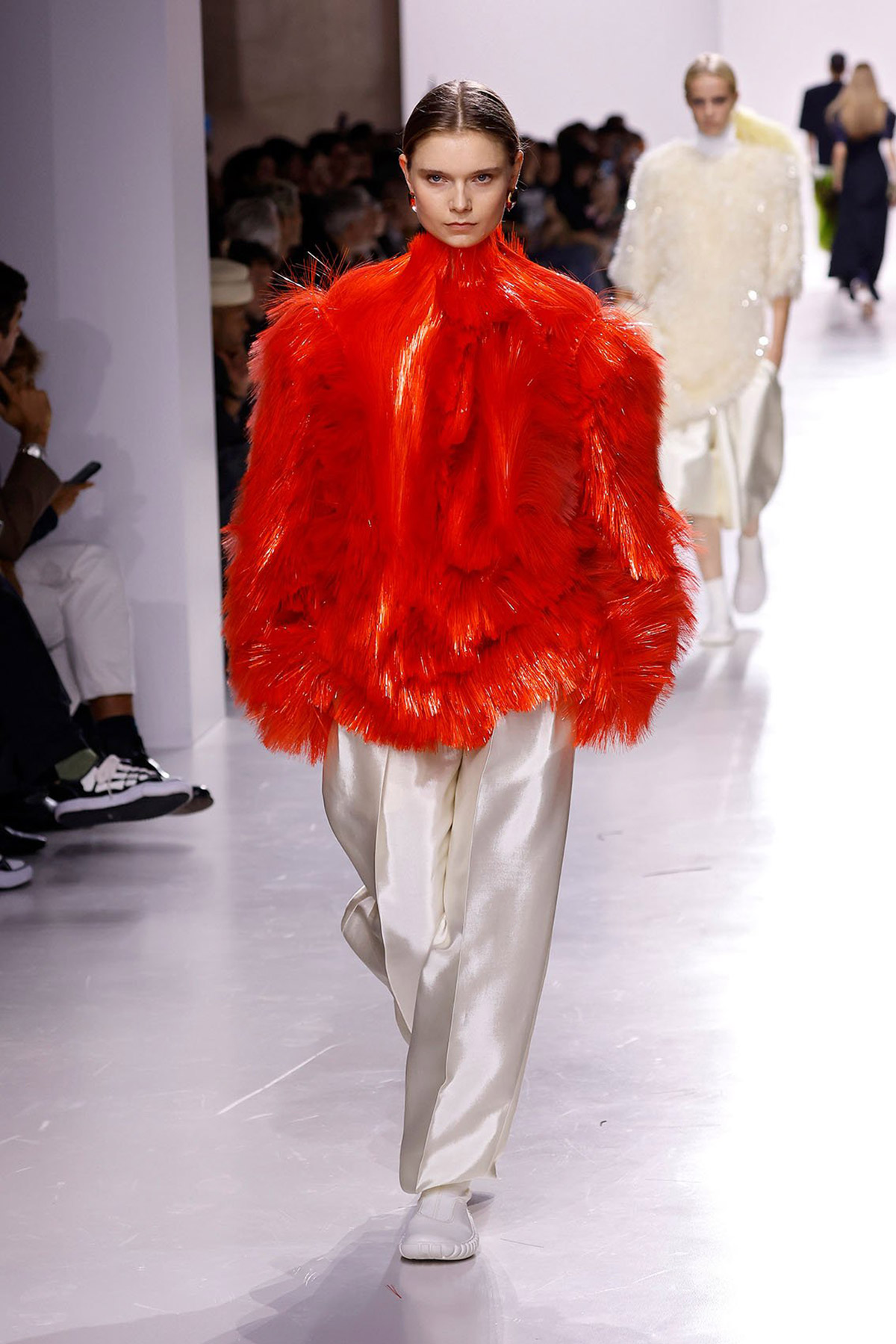
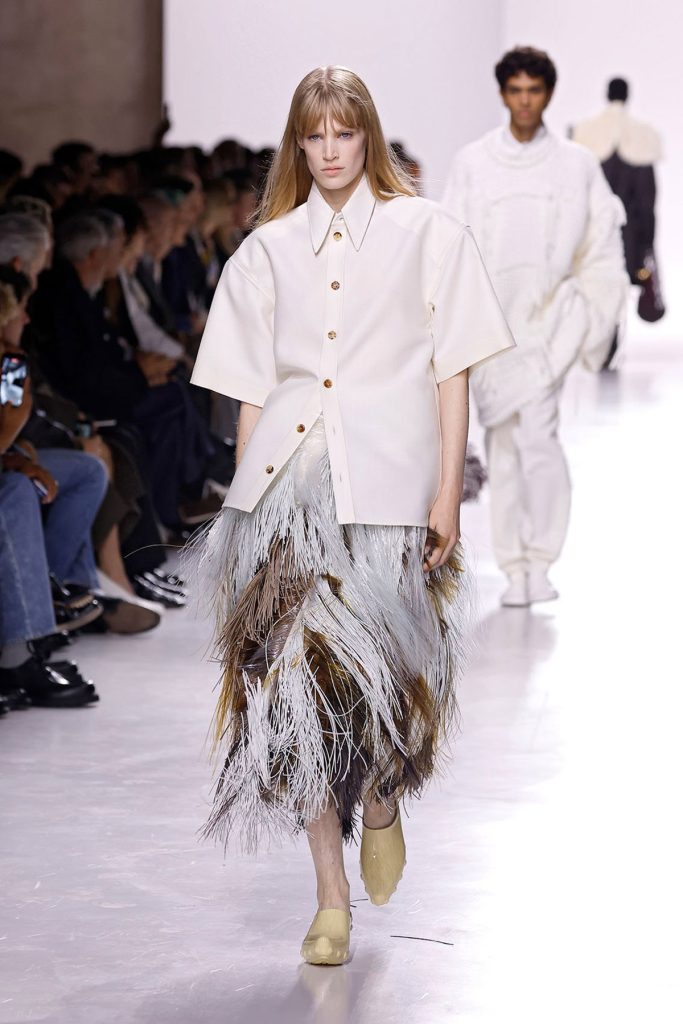
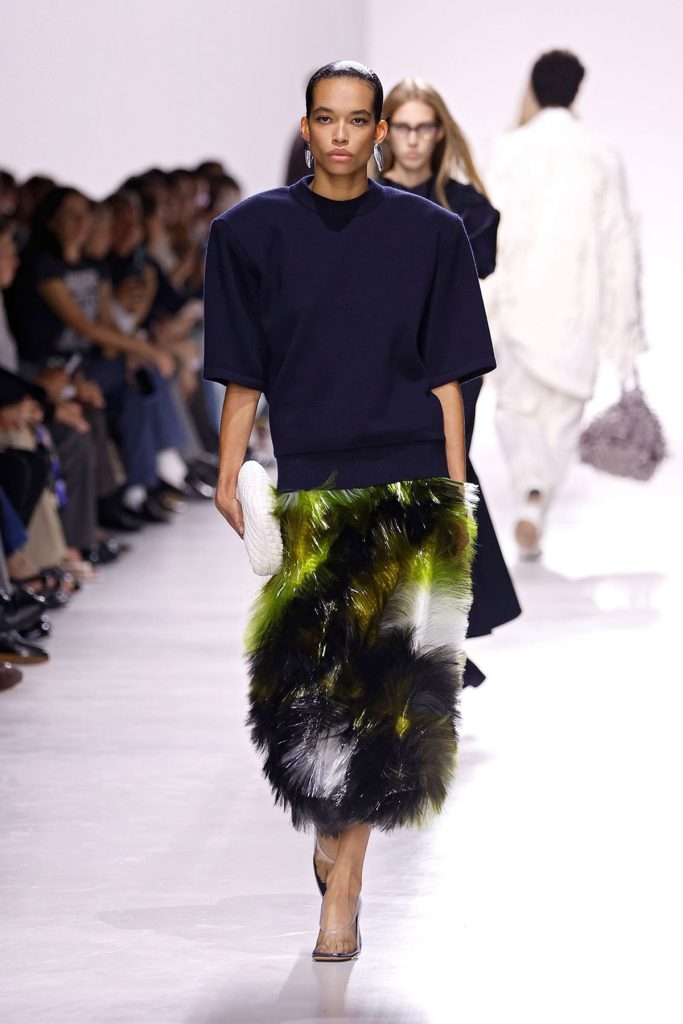
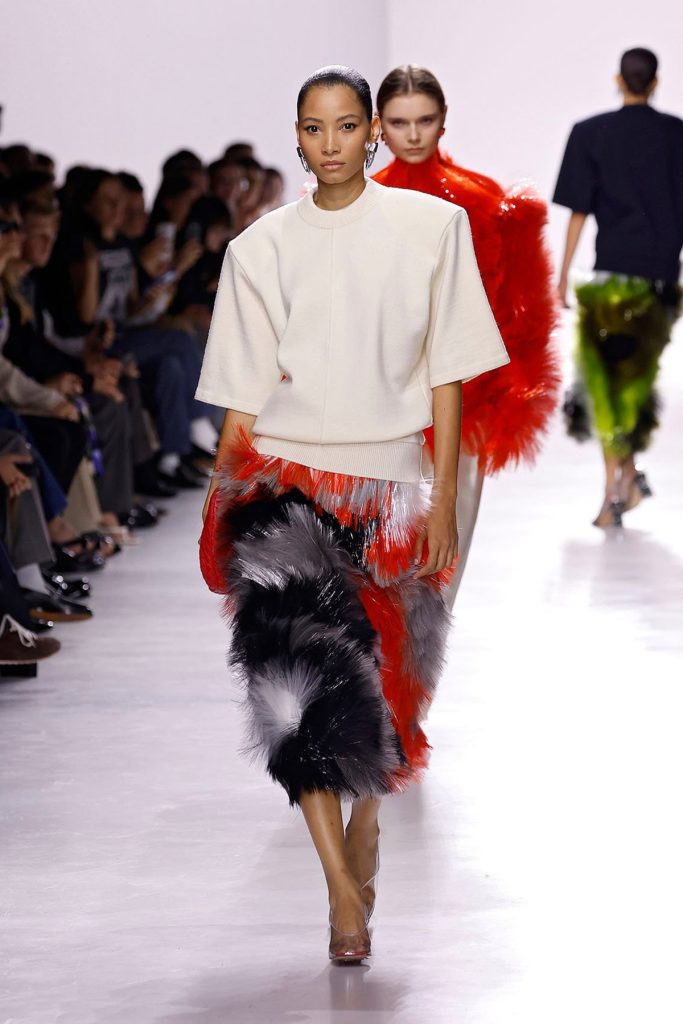
Crucially, Trotter ensured the brand’s foundation was honored, paying homage to the 50th anniversary of the iconic Intrecciato weave in the accessories, grounding her vision in Bottega’s craftsmanship.
In this debut, Louise Trotter has successfully translated her private observations into a compelling public narrative. It is a testament to her patient approach and her distinct sensibility—a collection that feels both innovative and deeply personal.
